The mongoose is a weasel-like mammal belonging to the family Herpestidae. A close relative of the meerkat, mongooses have long sleek bodies, tapered snouts, and short legs. They can range in size from 7 inches to 2 ft long. It’s normal for a mongoose to have gray or brown fur, and certain species even have ringed tails and striped coats. These small, quick-footed critters are full of surprises.
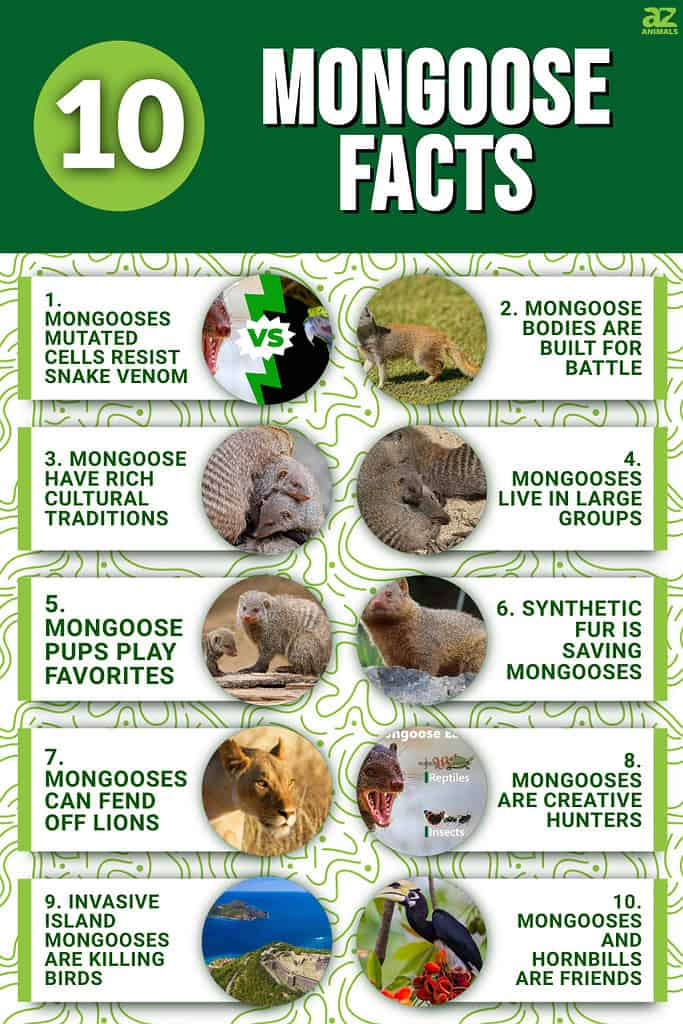
Read on to learn 10 incredible mongoose facts.
1. Mongooses Mutated Cells Resist Snake Venom

First on our list of incredible mongoose facts, they’re happy to take on snakes. When it comes to a snake vs a mongoose, the small mammal has a unique advantage. While they’re not fully immune to cobra venom as once believed, they do have some resistance.
The mongoose’s resistance to snake venom is thanks to an acetylcholine receptor. The slightly mutated receptor helps bounce the venom off the mongoose’s muscle cells without causing any harm.
Since they’re not afraid of snakes, it’s not uncommon for a mongoose to turn a large mamba into a tasty afternoon snack. On safari, you might see a mongoose attacking a snake hanging from a tree. Since the venom doesn’t hurt or impact them like other animals, they’ll eat the snake whole–including the poison sac.
2. Mongoose Bodies Are Built for Battle
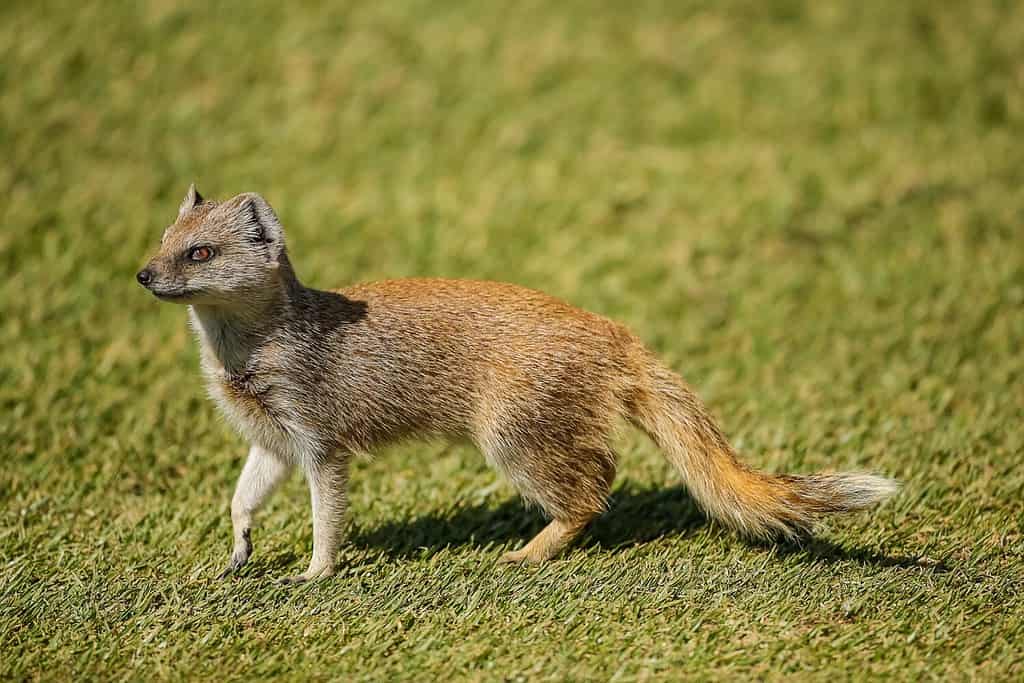
The mongoose has an agile, venom-resistant body built for battle.
©Tyrone Winfield/Shutterstock.com
Mongooses are quick-footed animals built for battle. Along with snake venom resistance, a mongoose also uses its ninja-like moves to avoid the snake’s bite altogether. They’re fast and good at predicting where the snake will move next.
If the snake does strike, the mongoose has a way of making its body tighten up. The limbs become stiff, and the creature spreads out to become twice its size.
3. Mongoose Have Rich Cultural Traditions

Mongooses pass on egg-breaking traditions to their young.
©Mathias Appel / CC0 1.0 – License
The banded mongoose might have a small brain, but that doesn’t stop it from having a rich cultural background. Certain animals, like monkeys, dolphins, chimpanzees, and killer whales, have special customs. These customs determine how they communicate with each other, stay clean, get food, and more.
Recently, the mongoose has joined the cultural club as scientists discover more about how they pass on traditions. They’ll work together to find food and cooperatively raise their young, and pass down lessons. One of their favorite traditions to pass down is how they crack open eggshells.
4. Mongooses Live In Large Groups
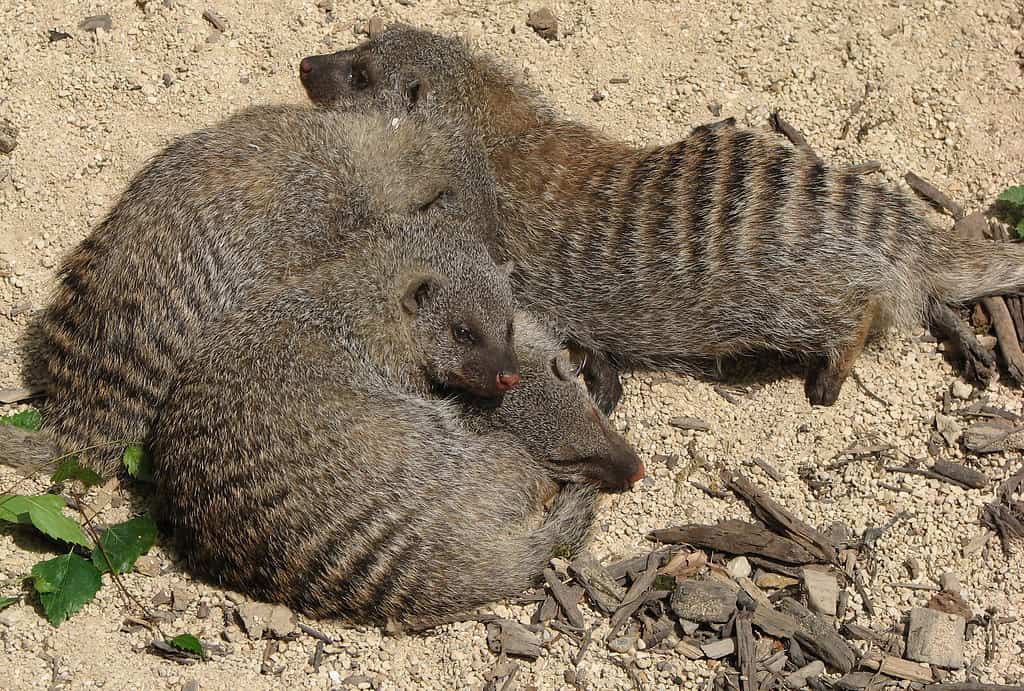
While you may imagine the mongoose to be a solitary creature, it tends to live in large groups of up to 40 members.
©Adrian Pingstone / Public Domain – License
It’s normal for banded mongooses to live in large groups with as many as 40 members. You’ll primarily find groups of mongooses in Africa. Their distribution covers most of the continent.
However, you can also find mongooses in southern Asia and the Iberian peninsula. They are primarily land animals; some are semi-aquatic. You’ll even find mongooses living in the treetops.
5. Mongoose Pups Play Favorites
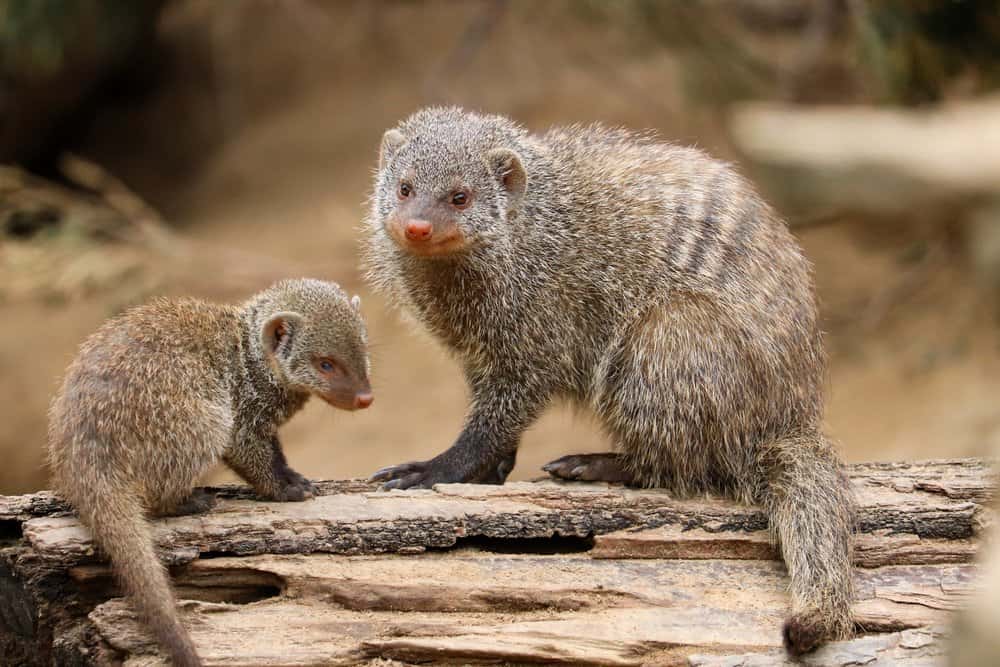
Mongoose pups spend a lot of time with male mentors who are not actually their fathers.
©Cassidy Te/Shutterstock.com
Since mongooses raise their young together, the pups sometimes favor a male who isn’t their father. Usually, young males who chaperone win over the youngster’s affection.
Banded mongoose pups form special one-on-one bonds with the adults who serve as their mentors. It’s normal for youngsters to aggressively compete for the attention of their male chaperones. Alternatively, chaperones will pay special attention to the mongoose pups who do the best job of paying attention.
6. Synthetic Fur Is Saving Mongooses
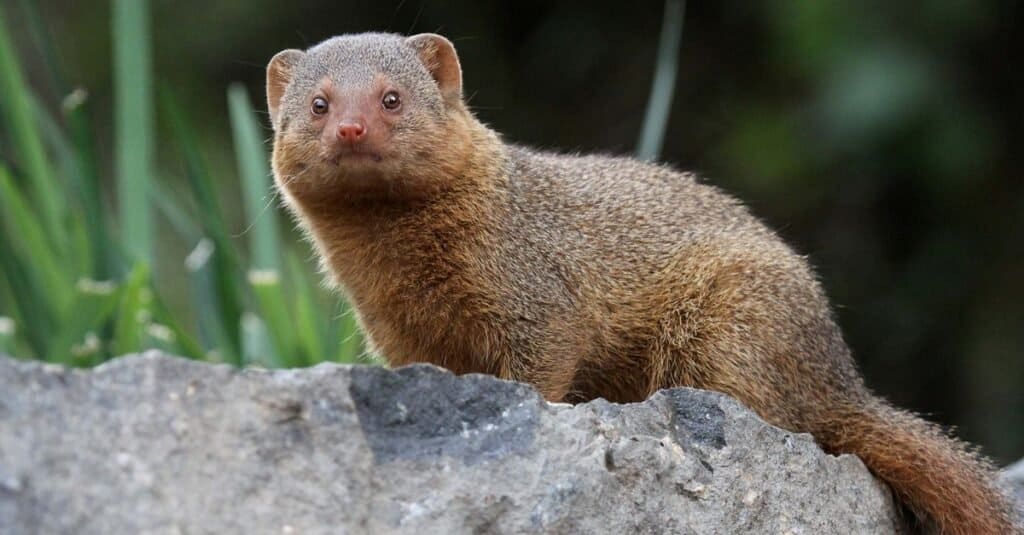
Fortunately, the synthetic fur industry has helped the mongoose, which was once hunted to dangerous levels for its hide.
©steve bushman/Shutterstock.com
Synthetic fur belongs on our list of incredible mongoose facts; it just might save their species. In 1972, India prohibited selling and buying mongoose parts. This included their hair.
However, the black market for mongoose fur continues to thrive. Regular arrests are still taking place for smugglers transporting mongoose hair. Often, the hair is used to make illegal paintbrushes.
Thankfully, paintbrush companies are stepping up to help out. New mongoose-free alternatives are being made to help replace the real thing. Different brands are creating proprietary mixes of natural hairs that can mimic the texture of mongoose hair. Eventually, synthetic hairs might be able to save real animals from extinction.
7. Mongooses Can Fend Off Lions
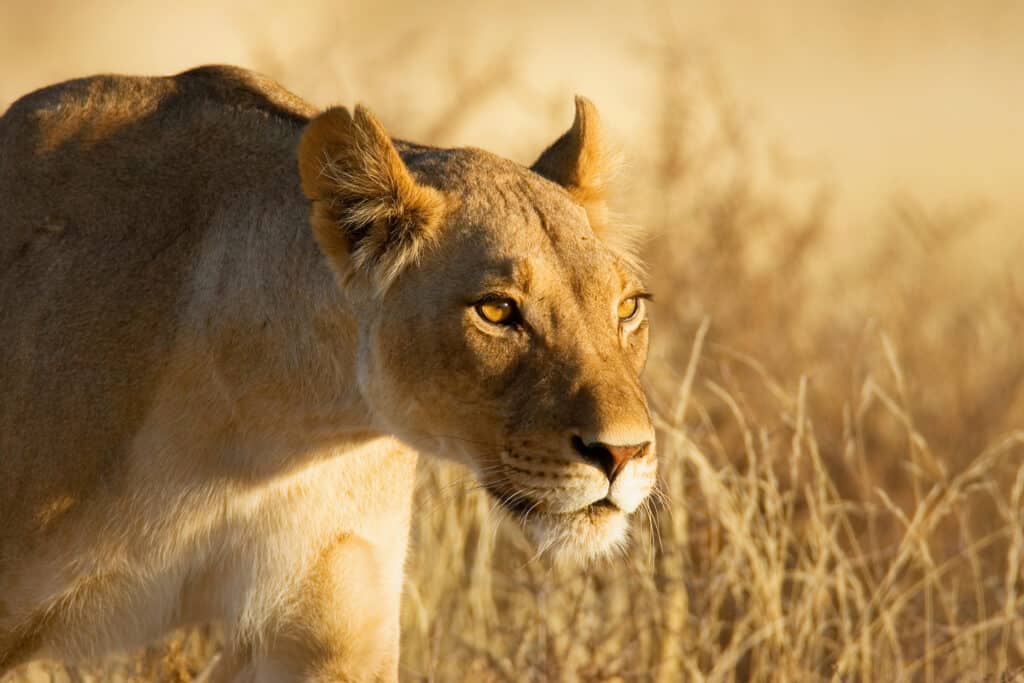
A mongoose can scare off
lion
predators.
©Johan Swanepoel/Shutterstock.com
Next, on our list of incredible mongoose facts, lions may cower in the face of an angry mongoose. A new exciting viral video shows a mongoose taking on four African lions. The wildlife photographer who caught the footage assumed the mongoose was done for it. However, when the scuffle was all said and done, the mongoose didn’t have a scratch!
It’s believed that the mongoose was trying to defend its territory from the lions. They probably had some pups in the den, so they were fighting extra hard to scare the lions away. A lot of animals, like alligators, become strangely aggressive when they have young or nests to protect.
8. Mongooses Are Creative Hunters

Mongooses are omnivores, feeding on plants as well as small animals ranging from birds to reptiles.
©/Shutterstock.com
Mongooses are omnivores; they eat plants and meat. They’re also non-discriminatory predators; they feed on all sorts of small animals ranging from birds all the way to reptiles. One thing a mongoose doesn’t lack is creativity.
Since they’re creative hunters, they have a ton of different ways to break open bird eggs. One of the mongoose’s favorite ways to break open a bird egg is by throwing it with its four paws.
9. Invasive Island Mongooses Are Killing Birds

Some islands in the West Indies now have bird species that are threatened by mongooses, which were originally released into the wild to control the rodent populations.
©YaromirM/Shutterstock.com
Back in the 1800s, several islands in Hawaii and the West Indies released mongooses to control rodent populations. The mongoose’s job was to kill enough rodents to secure the sugar cane plantations. Unfortunately, this effort is haunting the islands today.
The latest generation of island mongooses is threatening the survival of native island species. They’re particularly threatening to the native Island birds.
Of course, it’s not the mongoose’s fault! They never asked to come to the island in the first place.
10. Mongooses and Hornbills Are Friends
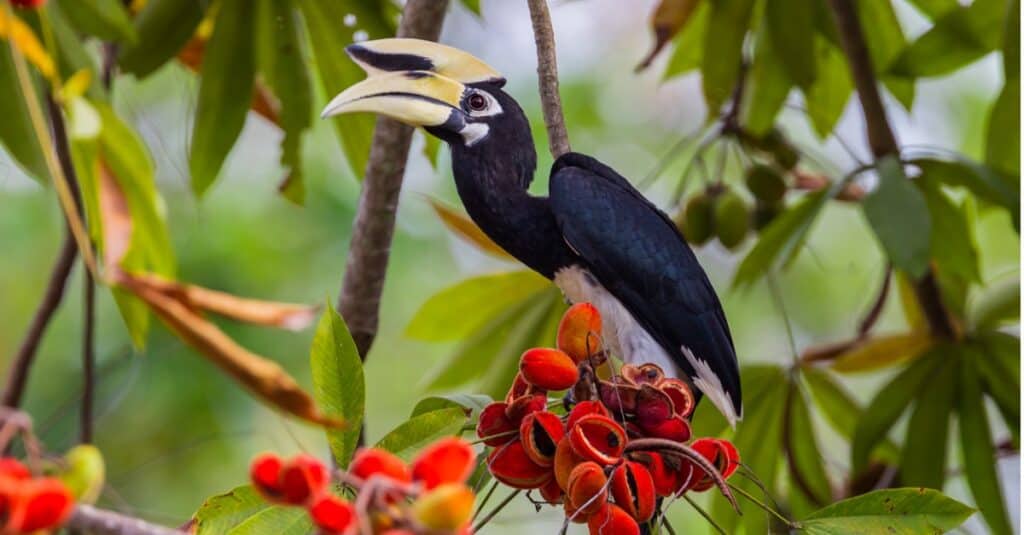
Mongoose and hornbills have a mutualistic relationship.
©iStock.com/kajornyot
Last, on our list of incredible mongoose facts, let’s talk about friendships. Mongooses and hornbills have a great working relationship. It makes sense, considering hornbills are friendly enough to groom warthogs.
Mongoose groups, especially the dwarf mongoose, are known to work with hornbills to forage for food. The birds serve as a lookout while the mongoose stirs up extra insect snacks.
Both hornbills and mongooses like snacking on locusts, beetles, crickets, and grasshoppers. Mongoose pups can run around the hornbill‘s feet without worrying about getting eaten themselves. There are even records of the animals becoming so close and if they actually hang out with each other.
Sometimes the hornbill birds have been observed hanging out and waiting for the mongooses to get up in the morning. It’s almost as if the birds are waiting to see if the mongooses can come out and play.
The photo featured at the top of this post is © steve bushman/Shutterstock.com
Thank you for reading! Have some feedback for us? Contact the AZ Animals editorial team.






